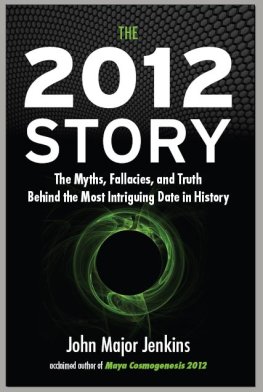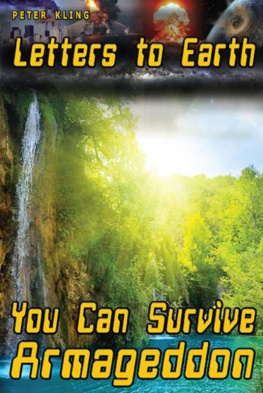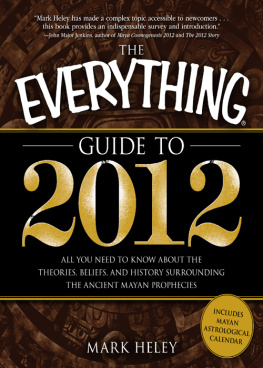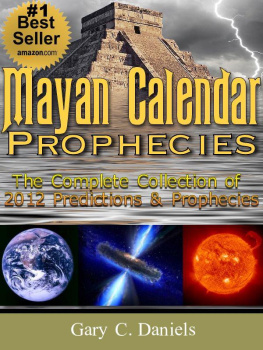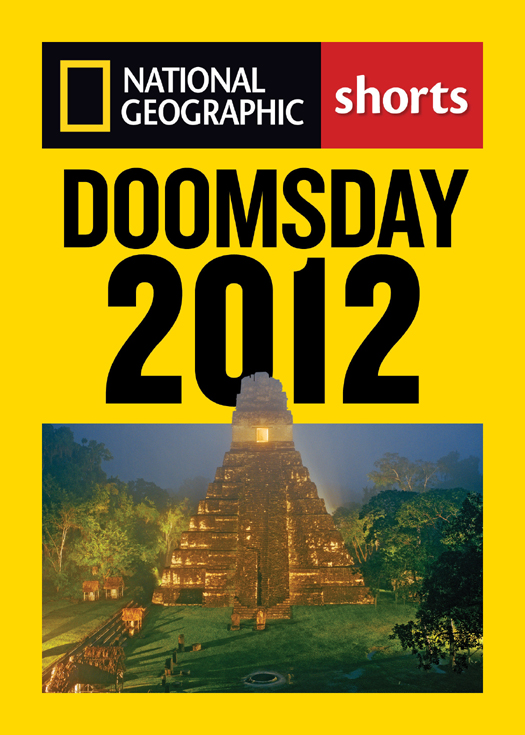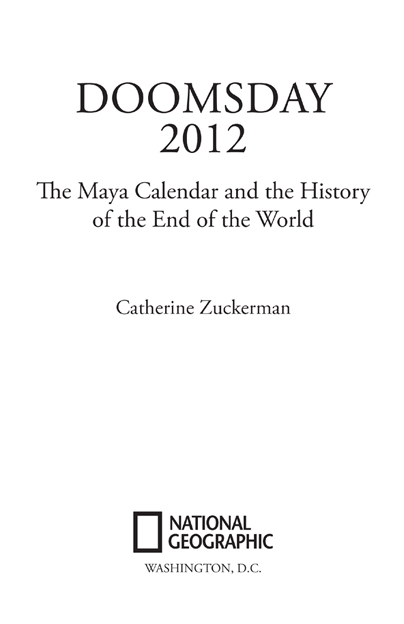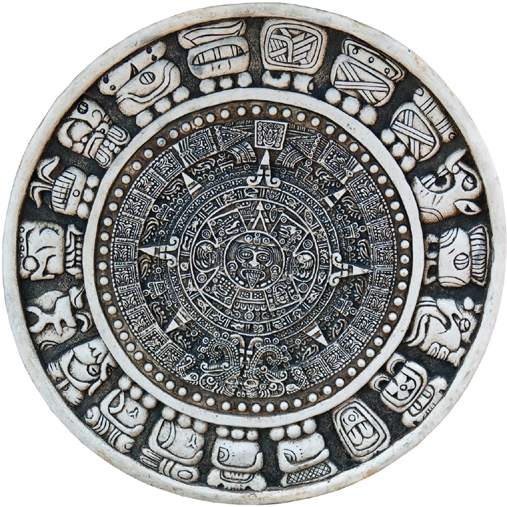Copyright 2012 National Geographic Society. All rights reserved. Reproduction of the whole or any part of the contents without written permission from the publisher is prohibited.
The National Geographic Society is one of the worlds largest nonprofit scientific and educational organizations. Founded in 1888 to increase and diffuse geographic knowledge, the Societys mission is to inspire people to care about the planet. It reaches more than 400 million people worldwide each month through its official journal, National Geographic, and other magazines; National Geographic Channel; television documentaries; music; radio; films; books; DVDs; maps; exhibitions; live events; school publishing programs; interactive media; and merchandise. National Geographic has funded more than 9,600 scientific research, conservation and exploration projects and supports an education program promoting geographic literacy.
For rights or permissions inquiries, please contact National Geographic Books Subsidiary Rights:
(Simon Norfolk, with permission of the Ministry of Culture and Sport, Guatemala; cover design by Jonathan Halling)
Wheel-shaped and ringed with hieroglyphics to represent the days, the Maya calendar functioned as a guide for planting corn and performing ritual ceremoniesand for making predictions. (Vadim Petrakov/Shutterstock)
C HAPTER O NE
The Ancient Maya
T he ancient Maya were nothing short of amazing. These enigmatic people worshipped many gods, practiced ritual animal and human sacrifice, and achieved scientific and cultural feats so extraordinary for their time that they still incite passionate debatesand even a ripple of apocalyptic fearsome four centuries after their empires final collapse.
Dating to as far back as 8000 B.C ., the Maya empire rose and fell over the course of 3,000 years. Part of Mesoamerican culture, the Maya inhabited a 324,000-square-kilometer area that spread across present-day Guatemala, El Salvador, Honduras, southern Mexico, and Belize. Their structures were so sturdy that many endure, giving visitors a chance to stand where Maya once stood and perhaps see what they might have seen. In Tulum, Mexico, for example, 800-year-old Maya ruins tower above the sea on a grassy cliff. The walls, temples, and colonnadesin various states of disrepairstill eerily pulse with life. Maybe its the countless lurking iguanasor maybe its the crimson handprints pressed high on a sun-baked wall, ghostly marks of a past civilization calling through the centuries, Someone else was here.
The time span of the Maya empire is commonly divided into three periodsthe Preclassic (2000 B.C . to A.D . 250), the Classic (250 to 900), and the Postclassic (900 to 1520)and is punctuated by at least 40 major kingdoms and exponentially more rulers and deities. Its a play in which there are hundreds of characters, says Mayanist scholar Ricardo Agurcia, who heads the Copan Association, a nonprofit organization that supports and promotes research, education, and national heritage in Copn, Honduras.
Each of these characters has a story, and when it comes to the myriad Maya kings, or kuhul ajaw, its often one of political maneuvering, conquest, and periodic bloodshed, all shrouded in a veil of mystery that archaeologists and scientists continue to peel back little by little to this day.
Take the warrior Fire Is Born, for example. It is believed that in the year 378, he was dispatched to Waka (in what is now northern Guatemala) from Teotihuacan, near present-day Mexico City. Armed and sporting a heavily feathered headdress, this stranger from the west came with a troop of men to take over and establish new rule. This was some 130 years into the economically, politically, and culturally robust Classic period, notes science writer and Maya expert Heather Pringle. Deciphered texts suggest that by allying himself with the right people and executing occasional force as well as careful diplomacy, Fire Is Borns presence marked a pivotal turning point in Maya history.
Later, in 615, a 12-year-old boyconsidered of agenamed Pakal took over the throne from his mother in the war-torn citystate of Palenque in present-day Mexico. His subjects believed he was divine, but whether he would survive to adulthood was anybodys guess. But he, like Fire Is Born, was a fast learner, quickly mastering the skills needed to establish order and return the then-failing city to power. Pakal eventually grew to be a venerated leader.
Then there was the Copan king named Waxaklajuun Ubaah Kawiil, who came to power in 695. A prolific builder, he presided over the pinnacle of Copans artistic and cultural achievements, says Pringle. But after a 42-year reign, he suffered a grim demise at the mercy of the gods: Captured by a neighboring ruler, he was slated for ritual sacrifice by decapitation, a method reserved for kings and recorded with a hieroglyphic that translates to the ax event.
These are just three of the legions of leaders whose dramas unfolded in great Maya city-states like El Mirador, a Preclassic political power deep in the jungles of what is now northern Guatemala. Later, Tikal, located just south of El Mirador, grew to become the most influential of all Maya city-states in that region, dotted with the grand tombsrising 230 feet above the ground to this dayof at least eight kings. And lets not forget Tulum, small in comparison, but in its day a prominent Postclassic port and trading center that was walled on three sides for protection.
One aspect of Maya culture that continues to cause both fascination and debate is the practice of human sacrifice. Although a relatively rare ritual compared to the bloodletting of the Aztec civilization, there are pictorial records of human sacrifices, considered powerful offerings of nourishment to the gods.
According to Robert Sharers book The Ancient Maya, heart removal was a common manner of sacrifice during the Postclassic period. The victim was covered in sacrificial blue paint and crowned with a special headdress. On the sacred altar, the prisoners blue body was laid out over a stone, rib cage facing up, and four men bound his hands and feet. A high-ranking priest called a nacom approached with a knife and plunged it deep into the prisoners chest cavity, then pulled out the warm, still-beating heart.
This ritual occurred in many ancient Maya cities. Even though hundreds and hundreds of years have since passed, these long-uninhabited sites still have the power to evoke in tourists an unmistakable, bone-chilling sensation that isnt easy to shake.



